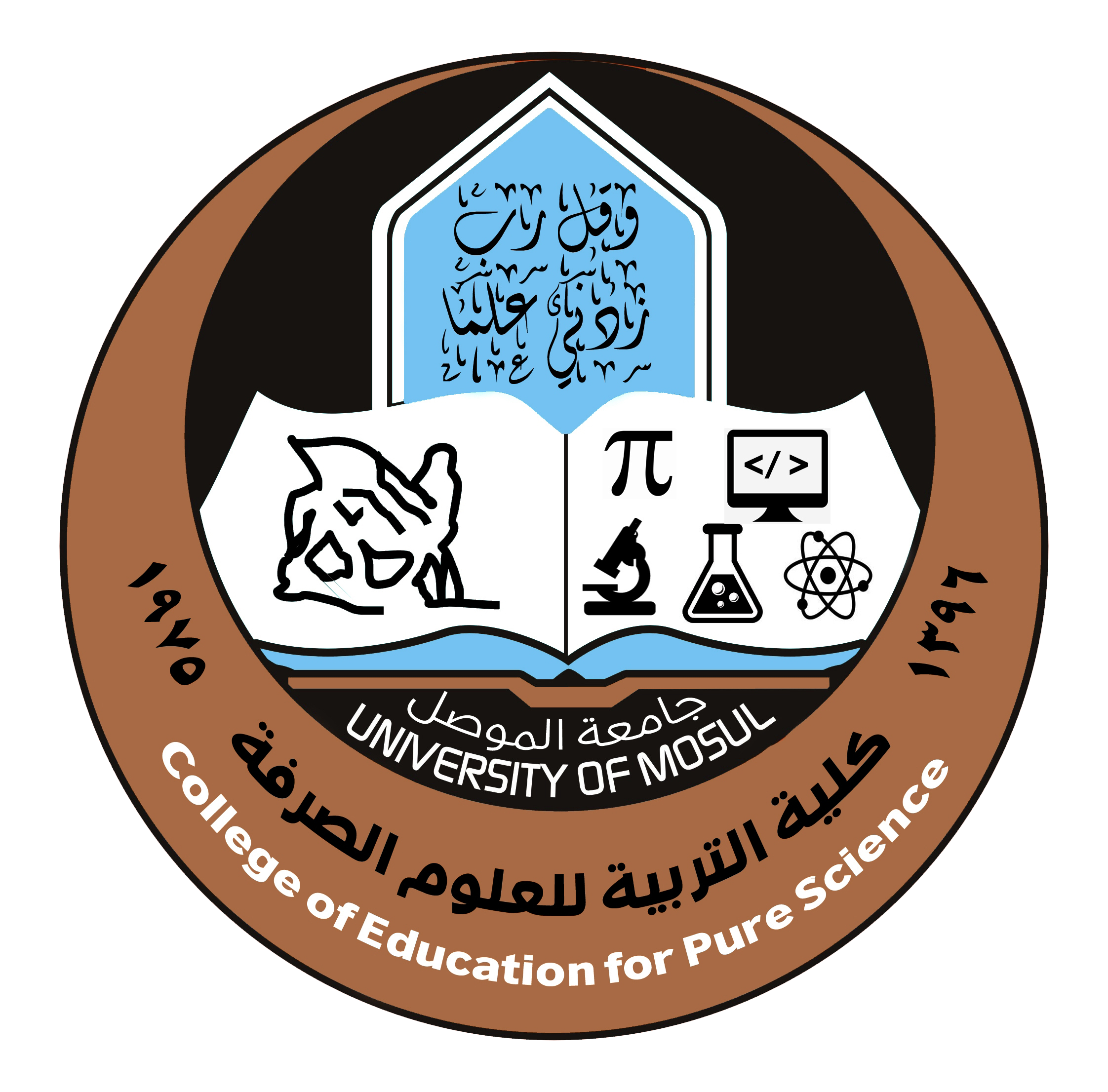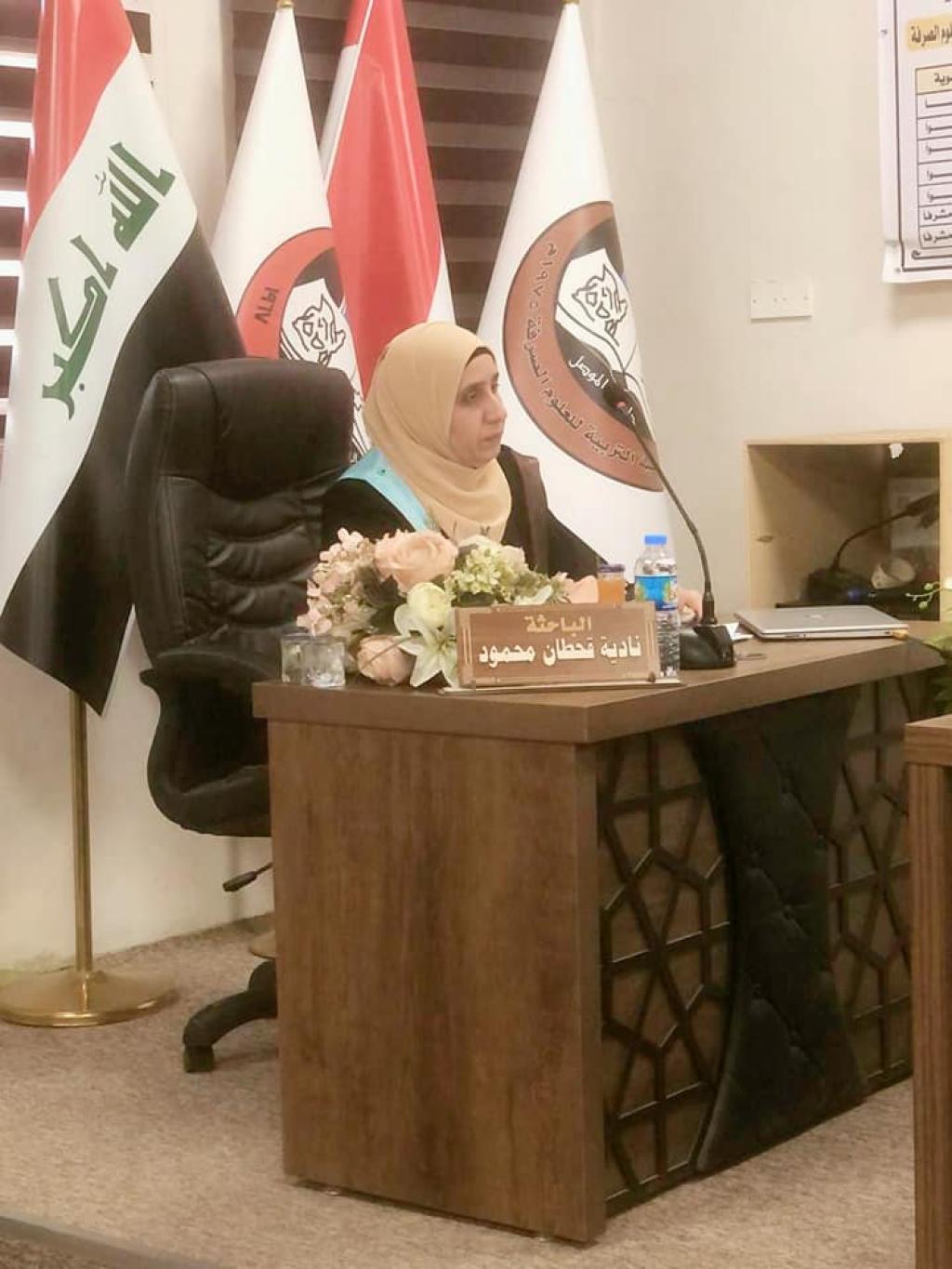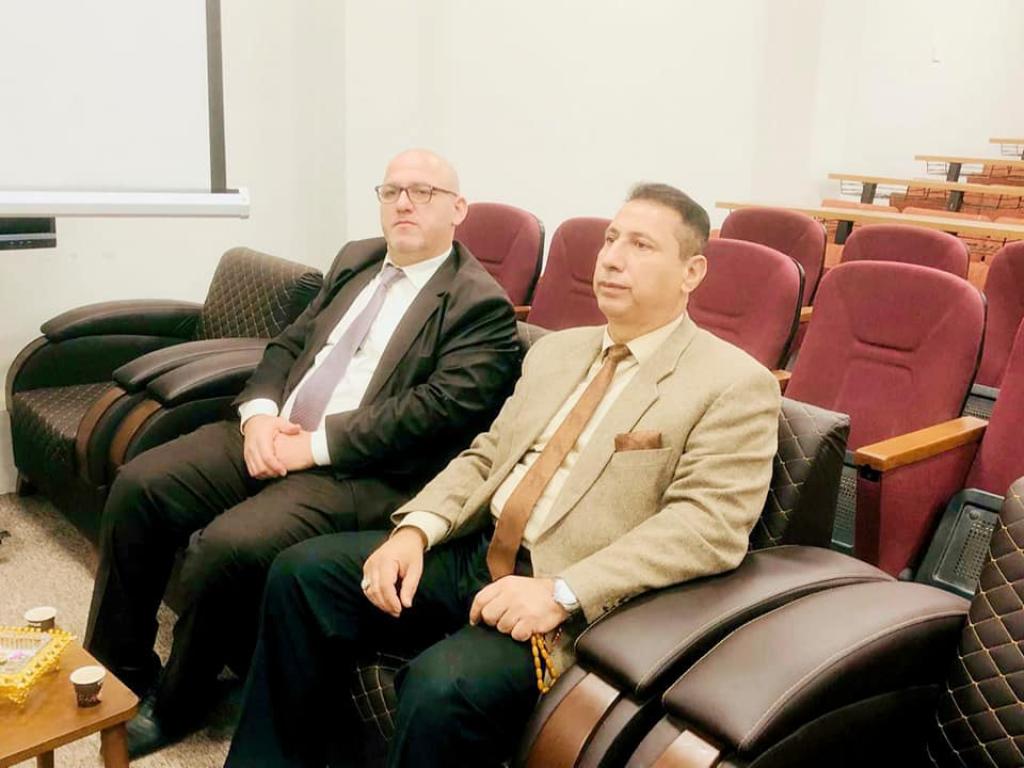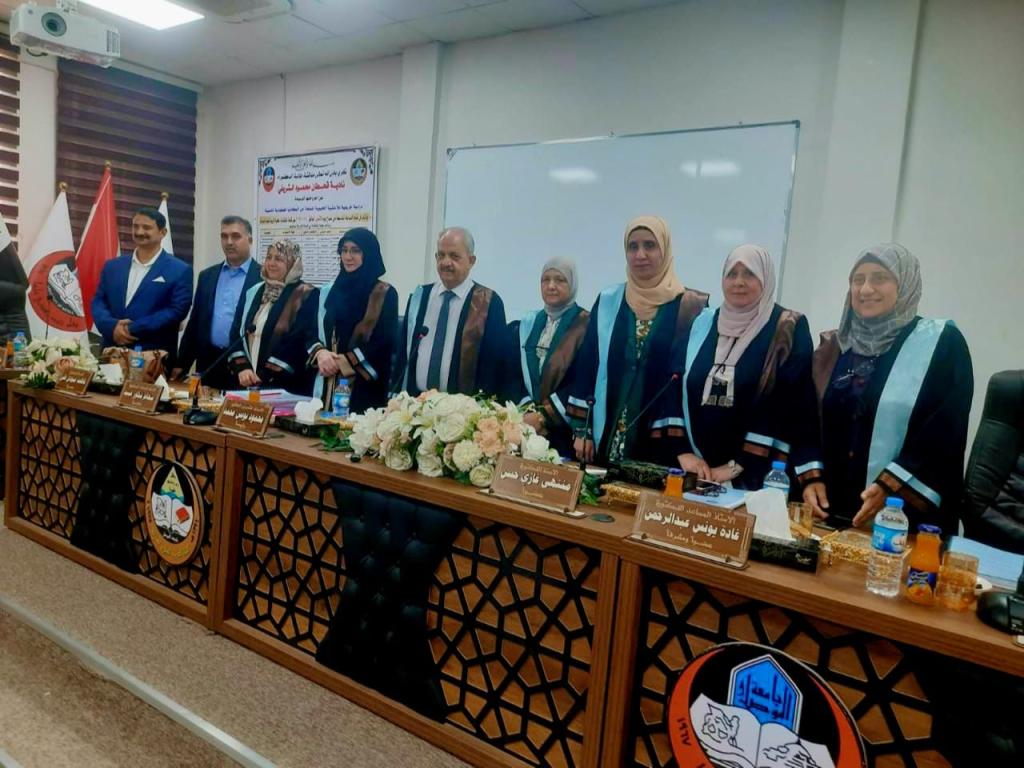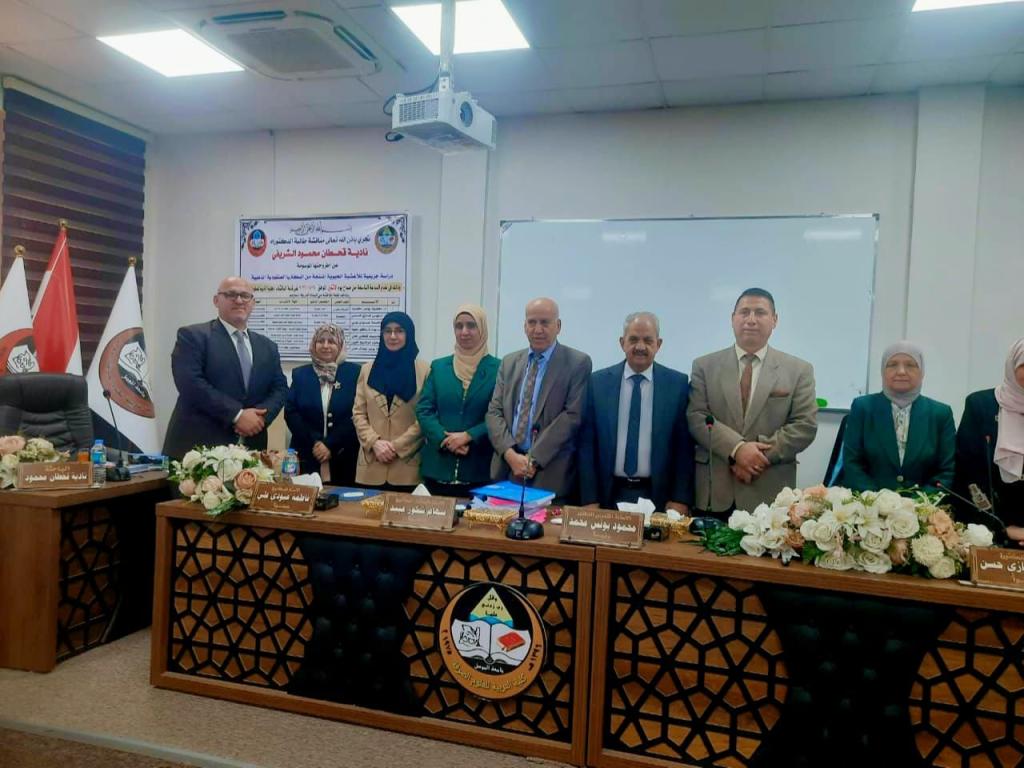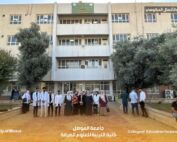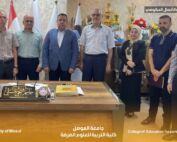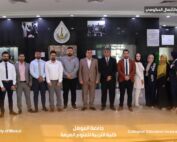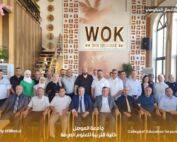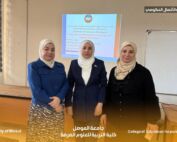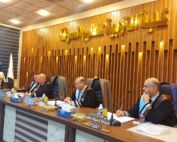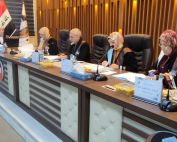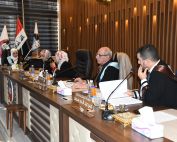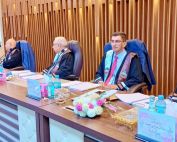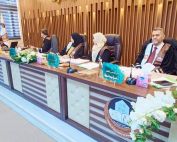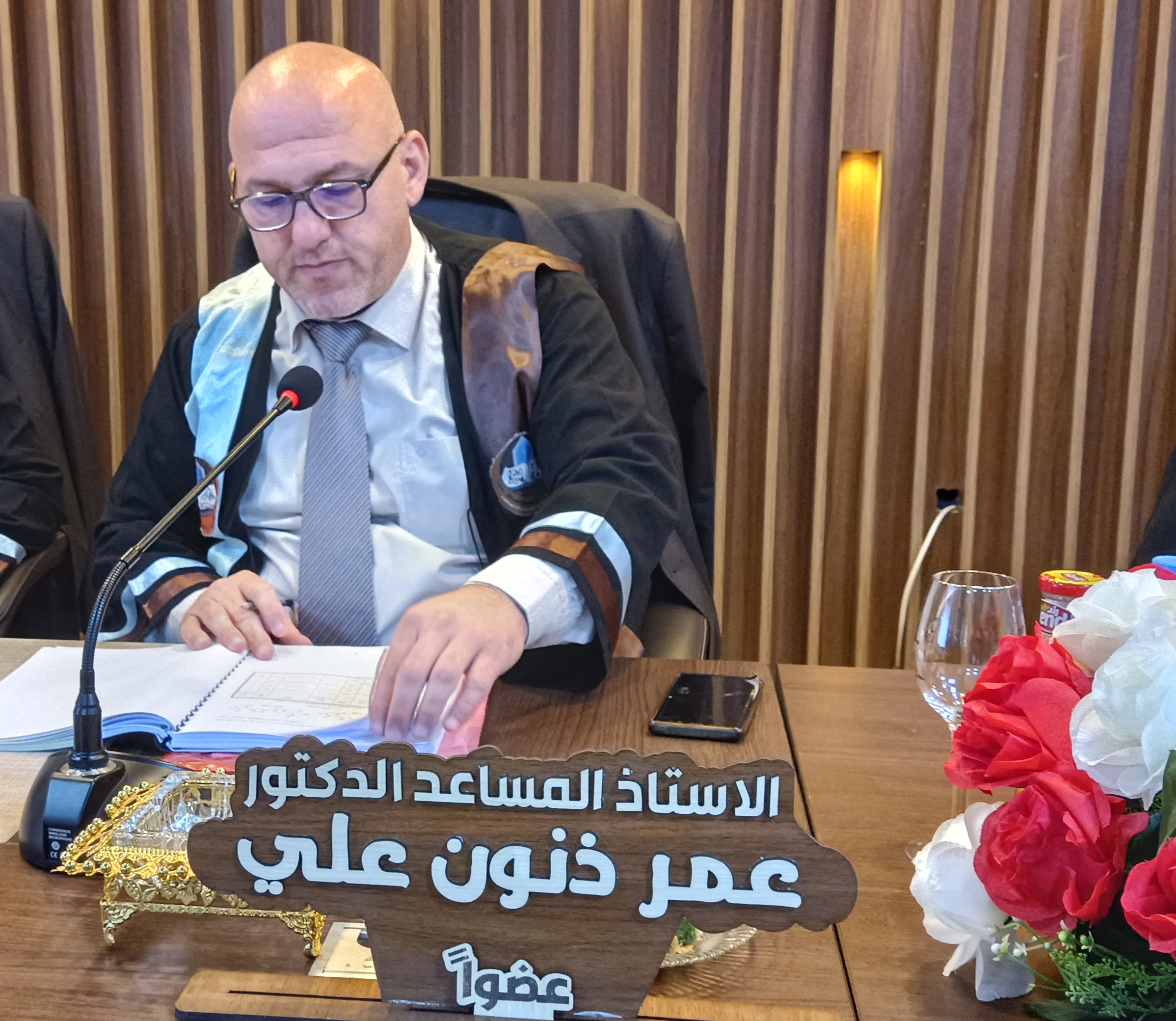14 November، 2022
PH.D. Dissertation Viva-Bioilogy Department
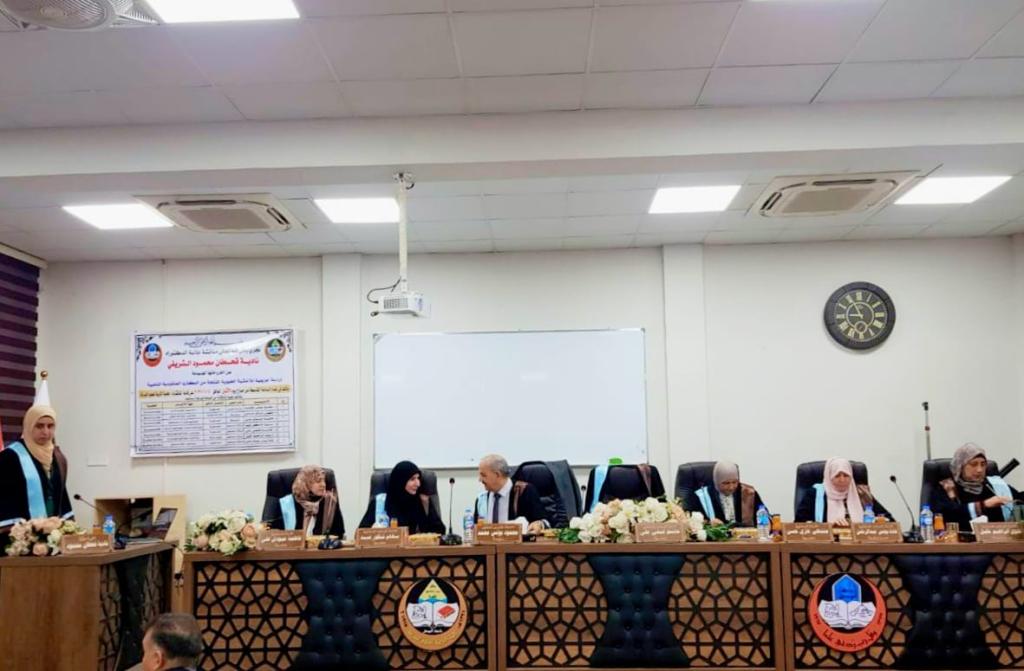
PH.D. Dissertation Viva in the College of Education for Pure Science entitled ” Molecular study of biofilms produced by Staphylococcus aureus”The College of Education for Pure Science, University of Mosul, has done the PH.D. Dissertation Viva entitled ” Molecular study of biofilms produced by Staphylococcus aureus “,On Monday, November 14, 2022, the respected Dean of the College, Assistant Professor Dr. Qais Ismail Ibrahim, the Honorable Scientific Associate and Administrative Associate, the Honorable Head of the Department of Biology, and a number of the college’s teachers were attended the viva. In this study, presented by the PH.D. Student Nadia Qahtan Mahmood in the Department of Biology, 200 samples were collected from the nose and hands of dental workers (dentists and assistants ) in the teaching hospital of the Collage of Dentistry, University of Mosul from the period 17th Dec. 2020 to 9th Feb.2021.The isolates were diagnosed based on phenotypic traits, microscopy, biochemical test, and the use of the Vitek – 2compact device to confirm the species where showed 66 isolates;32 of the hands and 34 of the nose were capable of fermenting mannitol sugar, and all Staphylococcal isolates were positive for catalase test at 100%, while 18.75% of the isolates from the hands and 52.9% of the nasal isolates were positive for the coagulase test. Using the Vitek 2-compact 36 fermented isolates were diagnosed which were distribute as follows 20 isolates of S.aureus bacteria; 14 isolates (63.63%) from the nose and 6 isolates (42.85%) from hands, 5 isolates of S.lugdunensis;4 isolates (18.18%) from the nose and one isolate (7.14%) from the hands, 4 isolates of S. saprophyticus bacteria; two isolate (9.09%) from the nose and two isolate (14.28%) from the hands, 2 isolates of S.hominis (14.28%%) from hands only and 3 isolates of S.warneri; two isolates from the nose (9.09%) and one isolate ( 7.14%) from the hands, and finally one isolate from each of S.sciuri and Leuconostoc mesenteroides bacteria and from hands with percentage (7.14%).The sensitivity of the different isolates to oxacillin was determined using minimum inhibitory concentration (MIC) and using the Vitek device because the antibiotic oxacillin is similar to methicillin in the device, and it was found that the isolates differed in their resistance to this antibiotic, were the highest resistance (100%) was for S.lugdunensis and S.sciuri while for S.aureus its resistance was 80% then S.hominis, S.warneri, S. saprophyticus 66.67%, 50%, 25% respectively. On the other hand, the sensitivity of different isolates to antibiotics was determined according to Kirby – Bauer method. And by using seven types of antibiotics Penicillin G, Methicillin,Oxacillin, Ciprofloxacin, Rifampicin, Vancomycin, Erythromycin where all Staphylococcus isolates showed resistance to Oxacillin and Methicillin at percentage 100% except for isolates S. saprophyticus, the resistance was 50%.Six isolates of S.aureus were selected to study their ability to form biofilms by microtiter plate method supported by molecular study and using PCR technique, the results showed that all Staphylococcus aureus have the ability to form biofilms because they have genes icaA and icaD with percentage of 83.3 and 100%) respectively, and it was found that (83.3%) of these isolates contained the icaA and icaD genes except one isolate which have the gene icaD so it gives a slight or thin biofilm, the results showed that (50%) isolates of S.aureus bacteria were resistant to methicillin due to their possession mecA gene that encodes resistance to this antibiotic,When investigating genes that are resistant to antibiotics and antiseptics, it was found that all six isolates did not contain the gene qacA B while they possessed the Smr gene with a percentage of (16.6%) and Conjugation test was carried out using two isolates of S.aureus with different genetic markers, which it is the characteristics of resistance to antibiotics, heavy metals and formation of biofilms, the donor isolate was resistant to antibiotics Vancomycin, sensitive to antibiotics Rifampcin and resistant to heavy metals, mercury chloride, cadmium chloride, nickel chloride and copper chloride and composed of biofilm, As for the received isolate it was resistant to antibiotics Vancomycin sensitive to antibiotics Rifampcin, sensitive to mercury chloride resistant to cadmium chloride, nickel chloride and copper chloride and not forming biofilms,therefore antibiotics Vancomycin and Rifampcin and heavy metal mercury chloride were selected to test isolates resulting from conjugation this bacterial isolate showed resistance to mercury chloride and showed its ability to form biofilms using micro titer plates method. The coupling frequency was 21×10-4.Upon molecular investigation of the genes responsible for the formation of biofilms which are icaA and icaD, the results were that the donor and recipient isolate possess both genes icaA and icaD together, As for the isolate resulting from conjugation, it possesses only one icaA gene.And when the gene expression was measured using qRT-PCR technique for the two genes icaA and icaD responsible for the formation of adhesive proteins in the biological membranes in the studied donor, recipient and resulting from conjugation, The isolation resulting from conjugation showed the highest value in gene expression for these two genes as it reached 2.143547 and 2.297397 respectively, from donor isolate as it is genetic expression reached (1and1) as for the receiving isolate, it is gene expression was reported 1.414214 and 0.933033 respectively.The reason for the difference between the phenotypic result of biofilm formation and the molecular results in gene expression can be attributed to several reasons including growth conditions and temperature and several other reasons.Propolis was selected for the preparation of the alcoholic extract and the study of the antibacterial activity of the S.aureus isolates in this study, as all the isolates used were sensitive to it at a concentration of 110 compared to Vancomycin used as a negative comparison as the effect ratio was 0.32288.As for the other concentration used in this study which are 11 and 1100, the bacterial isolates were resistance to it, as their resistance 0.86475 and 0.80613 respectively compared with the significant value used in the analysis was 0.05.The Viva committee was chaired by Experienced Professor Dr MahmoudY. M. University of Mosul College of Dentistry and the membership of Prof. Dr. Muntaha Ghazi Hasan University of Mosul College of Veterinary Medicine, Prof. Dr. Fattma Abodi Ali Hawler Medical University Department of Health Science, Asst. Prof. Dr. Siham Sh.Obaid AL-Salihi Northern Technical University Technical College-Kirkuk , Asst. Prof. Dr. Jassim Fatehi Ali University of Mosul College of Education for Pure Science and under the supervision and membership of both Asst. Prof. Dr. Najwa Ibrahim Khalil Al-Barhawee / University of Mosul /College of Education for Pure Science and Asst. Prof Dr. Ghada Younis Abdulrahman University of Mosul College of Dentistry.
